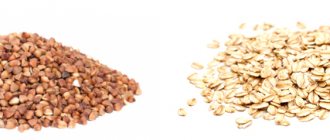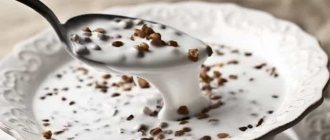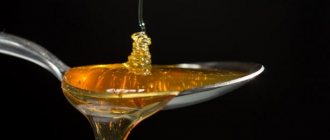Cereals are an essential component of any dietary and therapeutic nutrition, and their wide selection allows you to diversify your diet and organize a cereal diet for weight loss. Buckwheat, millet, pearl barley, oatmeal, rye, wheat, rice are sources of energy and components valuable for the body, each of these porridges is useful in its own way.
Among the wide range of cereal crops, buckwheat and rice are especially popular. From the article you will learn what is better for weight loss - rice or buckwheat, how many calories these cereals contain, what are the benefits and harms for the body, diet options and a sample menu.
Rice for weight loss
High nutritional value, taste, rich carbohydrate content and modest amount of fat, ease of preparation and variety of dishes based on it make the rice diet one of the most popular all over the world. The benefit of cereal for weight loss is that it cleanses the body of waste and toxins, improves metabolic processes, reduces cholesterol levels, and neutralizes swelling.
Not all rice is created equal . The nutritional, taste and dietary properties of cereals directly depend on the variety and method of grain processing. White polished rice is the most useless. It is suitable for preparing everyday dishes, but nothing more. During the grinding process, grains lose all useful components; the main substance remains starch, which has a high calorie content (350 kcal) and a glycemic index (over 80 units).
Nutritionists advise eating brown unpolished rice , or alternatively, steamed white rice cereal. All positive characteristics of the product remain available due to the preservation of the bran shell. It contains the largest amount of nutrients and substances beneficial to the human body.
Calorie content and BZHU
dry brown rice After cooking, the calorie content is reduced by almost 2 times and reaches 112 kcal. Dry cereal is rich in carbohydrates (72.7 g) and low in proteins (7.5 g) and fats (3.2 g).
Beneficial properties, possible harm
Cooked brown rice perfectly saturates the body . After a rice dish, there is no feeling of hunger or need for snacks for several hours. Cereals have a rich carbohydrate composition, where most of the macronutrients are absorbed gradually, which fills a person with energy for a long time, increases endurance and performance.
At the same time, physical activity promotes additional calorie burning. Due to the presence of plant fiber in the composition, which accelerates the process of fat breakdown, carbohydrates do not turn into fat reserves.
Fiber also has a positive effect on intestinal motility, removes waste and toxins from the body, lowers blood sugar levels, and helps eliminate cholesterol plaques. Dietary fiber is characterized by adsorbing properties, due to which it has an anti-inflammatory effect on the intestines.
Brown rice contains a lot of protein , which is necessary to maintain muscle tone and the normal functioning of the body's cellular system. Proteins are involved in the metabolism of fats, minerals, carbohydrates, and vitamins.
For reference. It is recommended to include rice dishes in the diet of people with gastrointestinal diseases of an erosive and ulcerative nature. Cereal reduces acidity levels, coats irritated mucous membranes, protects against the destructive effects of aggressive radicals, and reduces pain.
Due to the pronounced diuretic effect, consumption of cereals has a positive effect on the functioning of the kidneys and other organs of the urinary system, which is manifested by the removal of excess fluid from the body and getting rid of edema.
Brown rice prevents diseases of the cardiovascular system, in particular atherosclerosis, cardiac ischemia, and myocardial infarction. It strengthens and increases the elasticity of the walls of blood vessels and small capillaries, normalizes blood circulation processes, eliminates harmful deposits, and reduces cholesterol levels. Due to the ability to stabilize high blood pressure, it can counteract developing hypertension.
The product, in moderate quantities, normalizes blood glucose levels, which is especially important for diabetes. The rice diet alleviates the condition of people suffering from osteochondrosis, rheumatism, gout, and arthritis. The cereal has an anti-inflammatory and analgesic effect, regulates the metabolism of purines in the body, and removes crystals of uric acid salts.
Calcium in rice is necessary for the mineralization of teeth, maintains bone strength, provides muscle contractions, blood clotting processes and nerve impulse transmission.
Rice helps with diarrhea , but its excessive consumption can provoke the opposite condition - constipation. Other negative properties of brown rice include the content of a harmful substance in the pityriasis shell - phytic acid. In excess quantities, it inhibits cell development, impairs the bioavailability of phosphorus, magnesium, calcium, and other mineral salts, and corrodes bone tissue from the inside in osteoporosis.
About other ways to lose weight:
Cooking and drinking pumpkin juice for weight loss
Dill: a tasty and healthy way to combat excess weight
Why is asparagus good for weight loss and how to use it
What's the best way to cook?
How to cook rice with minimal calories
Sri Lankan researchers have developed a new method of heat treatment of rice. This cooking method, thanks to heat treatment, reduces its calorie content by 50 percent. At the same time, it retains valuable nutritional properties. All you need to do is boil water and add coconut oil (about a teaspoon of oil per half cup of rice).
Then cool the rice and leave it in the refrigerator for about 12 hours. Looks like it, doesn't it? Just what effect does it have on calories and nutritional value? The process described above is an example of a fascinating branch of chemistry - food chemistry. The whole technique is based on the knowledge that not all starches behave the same.
Many starchy foods, such as potatoes and rice, contain varying amounts of resistant starches, depending on how they are cooked. When exposed to temperature, chemical changes occur in them that convert resistant starches into digestible ones.
The researchers tested 8 different ways to cook rice. They used 38 different types of grains grown in Sri Lanka. They found that adding fat, such as coconut oil, before cooking and then cooling the rice changed its chemical composition.
After this, it contains more resistant starches. Oil reacts with starch molecules and changes their structure. On the contrary, the cooling process for 12 hours leads to the formation of hydrogen bonds between amylose molecules, which also leads to the conversion of absorbed starch to resistant starch.
Recommendations for cooking buckwheat during a diet
Interesting! Buckwheat does not need to be boiled - this is the basic rule that people who want to lose weight with buckwheat need to know. It needs to be poured with boiling water and left to brew for several hours. The best option would be to leave it overnight. Thanks to this, all the beneficial substances that buckwheat contains remain in the grains.
Also, with this method of preparation, the glycemic index is lower than with conventional preparation. This means that buckwheat will saturate the body with energy, but will not be deposited in fatty tissue.
When cooking buckwheat, like rice, you should avoid salt and other spices. To ensure that eating such porridge is not boring, you should add fresh vegetables, cottage cheese, kefir, eggs, chicken, etc. to it.
Buckwheat for weight loss
The buckwheat diet is a simple, inexpensive and effective way to get rid of extra centimeters on your waist . The effectiveness of weight loss is achieved due to the absence of “fast carbohydrates” in the composition.
The fiber in the composition does a good job of cleansing the intestines of toxins; the body spends more calories on its processing than it consumes. A significant advantage of buckwheat is the absence of gluten, which can cause allergic reactions.
Calorie content and BZHU
The calorie content of dry fried buckwheat is 346 kcal, when cooked it is 101 kcal.
100 g of dry cereal contains:
- proteins - 11.7 g;
- fats - 2.7 g;
- carbohydrates - 64.7 g.
Beneficial properties, possible harm
The most important beneficial effect of buckwheat is cleansing the digestive system of waste and toxins , which helps reduce cholesterol and blood sugar levels. Cereals facilitate bowel movements during constipation, soften stools, and stimulate bowel movements.
Buckwheat has a high content of flavonoids . They have anti-inflammatory, bactericidal, antioxidant properties. They help strengthen blood vessels, increase their strength and elasticity, have a beneficial effect on the functioning of the thyroid gland and heart muscle, and prevent the formation of tumors and the spread of cancer cells.
Including buckwheat in the diet prevents the occurrence or exacerbation of arthritis, varicose veins, supports the functionality of the adrenal glands, regulates the activity of the central nervous system, and has a beneficial effect on the condition of the skin, hair, and nails.
Buckwheat provides the human body with B vitamins , which is why cereals are so valued. Riboflavin (vitamin B2) promotes oxygen saturation of the blood, choline (vitamin B4) is responsible for neuromuscular transmission, stimulates thinking processes, has a positive effect on brain activity, and improves memory. Folates (vitamin B9) promote better absorption of iron in the body, affect mood, appetite, and the state of the nervous system.
Dishes made from buckwheat are recommended for athletes and people engaged in heavy mental, physical, and emotional labor, since the grain accelerates recovery processes and saturates the body with useful components. Copper increases the body's resistance to aggressive external and internal factors, enhances water, mineral and gas metabolism.
Selenium is a powerful antioxidant, has a positive effect on the cardiovascular system, improves blood flow to the heart, and neutralizes harmful substances in the liver. Its consumption prevents a decrease in bone density with deformities of the limbs and even the spine (Kashin-Beck disease). Zinc is necessary for the formation of bone and cartilage tissue, slows down the development of cancer cells, and improves the absorption of B vitamins.
Consumption of buckwheat provides the body with phosphorus , which plays an important role in metabolic processes, regulates acid-base balance, and is necessary for the skeletal system for complete mineralization.
The positive properties of buckwheat outweigh the negative side effects, but they still exist. A long-term diet on buckwheat can lead to exacerbation of chronic diseases, cause digestive problems, headaches, weakness, dizziness due to glucose deficiency.
Calorie content of rice and buckwheat
Calorie content of rice
Depending on the length of the grain, rice is:
- long grain,
- medium grain,
- round grain.
Depending on processing:
- unpolished
- polished
- steamed
Depending on the color, rice can be red, white, yellow, beige, black and purple. Basmati and jasmine deserve special attention. These species have a special aroma.
Below is a table of nutritional values for the most popular types of dry rice.
| Variety | Kcal per 100g | Proteins (g) | Fat (g) | Carbohydrates (g) |
| White | 334 | 6,7 | 0,7 | 78,9 |
| Red unsanded | 362 | 10,5 | 2,5 | 70,5 |
| Brown | 331 | 6,3 | 4,4 | 65,1 |
| Black | 357 | 15,0 | 1,1 | 75,0 |
The second table displays the nutritional values of cooked rice.
| Variety | Kcal per 100g | Proteins (g) | Fat (g) | Carbohydrates (g) |
| White | 120 | 2,2 | 0,5 | 24,9 |
| Red unsanded | 122 | 2,8 | 0,9 | 25,5 |
| Brown | 118 | 2,6 | 0,9. | 22,8 |
| Black | 137 | 4 | 0,3 | 21,1 |
Rice is the mainstay of Asian cuisine, but it is also a well-known and popular part of dinners in other countries. Rice served with vegetables or in addition to meats and sauces is especially popular. Rice comes in several forms that differ from each other in color, taste and properties.
Black rice has a distinctive taste and is high in amino acids, iron, zinc and carotene. Brown rice, in turn, is recommended for people with high cholesterol levels and people who follow a low-calorie diet.
It's also a great source of fiber! Jasmine rice is delicate in taste, has a slightly sticky consistency, is low in calories and is rich in B vitamins, as well as phosphorus and potassium. You can also find white basmati rice and whole grain red rice in stores.
Calorie content of buckwheat
Long articles can be written about the taste, nutritional and health properties of cereals. One of the cereals most frequently chosen by consumers is buckwheat porridge, which has a deep flavor, texture and is high in exogenous amino acids, antioxidants (including quercetin and rutin) and fiber.
Depending on the integrity of the grain, they are distinguished:
- kernel (whole cereal);
- prodel (coarsely ground);
- Smolenskaya (highly crushed);
- buckwheat flour.
Depending on the processing method:
- fried (brown in color);
- steamed (light brown);
- natural (green).
Nutritional value of buckwheat porridge in dry form.
| Variety | Kcal per 100g | Proteins (g) | Fat (g) | Carbohydrates (g) |
| Yadritsa | 300 | 9,5 | 2,3 | 60,4 |
| Done | 308 | 12,6 | 3,3 | 57,1 |
Nutritional value of cooked buckwheat.
| Variety | Kcal per 100g | Proteins (g) | Fat (g) | Carbohydrates (g) |
| Yadritsa | 119,7 | 4,6 | 1,1 | 22 |
| Done | 84,7 | 2,8 | 0,5 | 18,5 |
What is better for losing weight: buckwheat or rice?
There is no clear answer to the question. When choosing a dietary menu, you should focus on gastronomic preferences and the presence of possible contraindications, concomitant diseases and pathological conditions.
If a person who wants to lose weight suffers from swelling , then it is advisable to give preference to rice cereal. It has a diuretic effect, removes excess water from the body, due to which swelling goes away.
Buckwheat will be more beneficial for people with low hemoglobin levels . Therefore, the question of which diet to choose for weight loss - rice or buckwheat - must be considered separately in each specific case.
Which is healthier?
If you compare rice and buckwheat , they have similar nutritional and dietary properties. Both grain crops act as sources of energy, substances beneficial to the body, cleanse the intestines, normalize metabolic processes, promote weight loss, and improve the condition and functionality of the digestive, nervous, urinary, and endocrine systems.
All diet options are highly effective, but each has certain benefits.
What is healthier to eat: rice or buckwheat?
Buckwheat and rice are cereal crops and belong to the same grain group. Grown in natural conditions on the ground under the sun's rays, they have a large energy and vitamin reserve .
Both grains are useful as a source of carbohydrates, fiber and accumulate a large amount of nutrients needed by the body. The use of agricultural and agronomic growing methods in different climatic conditions has ensured differences in the structure and biochemical composition of grains .
For regular eating, it is recommended to find out what is healthier to eat rice or buckwheat. What are the similarities and differences between these cereals? Understand the biochemical composition of each crop. What precautions and recommendations are there for regularly using them in food?
How to cook better when losing weight and in what form to eat
The results of weight loss depend not only on the correct choice of cereal variety , but also on proper heat treatment. Porridges are prepared fresh, without salt and sugar. It is acceptable to season with lemon juice, natural vegetable oil or soy sauce.
Rice
It is recommended to cook rice for the diet by steaming or boiling , sometimes with pre-soaking. Rice can be used to prepare not only a side dish, but also lean rice meatballs, soup, and casserole.
For reference. White unpolished rice cooks quickly, boils well and remains fluffy, brown rice takes longer to cook (about 30 minutes), has a specific taste and moderate hardness.
Buckwheat
In order to preserve the nutritional, beneficial and dietary properties of the cereal, nutritionists advise losing weight not on boiled buckwheat, but on the grain, steamed in boiling water and infused until tender. As an alternative, buckwheat is steamed and simmered in the oven.
Live healthy! Which is healthier, buckwheat versus rice? (12/15/2015)
How many carbohydrates are in buckwheat and pasta?
Cereals, flour, pasta. Table of caloric content and chemical composition of food products.
| Product | Calorie content | Carbohydrates |
| Buckwheat, grain | 343 kcal | 61.5 g |
| Buckwheat, whole grain unprocessed | 296 kcal | 56 g |
| Buckwheat porridge from kernels 1-278 | 101 kcal | 14.6 g |
| Crumbled buckwheat porridge (boiled buckwheat without salt and oil) | 100.9 kcal | 18.567 g |
Rice diet: options, how much, and over what period you can lose it
There are many varieties of rice diets , which can be divided into mono-diets and combined ones. To maintain a certain weight or bounce back after overeating, a fasting day on rice is ideal. Unloading lasts 1-2 days, during which time you can reduce body weight by 1-1.5 kg by cleansing the intestines of waste and toxins and removing excess water from the body.
The rice diet for 3 days is presented in two options . The first involves a strict menu restriction: only rice without salt and sugar, water and herbal tea. This regimen can reduce body weight by 3-4 kg, cleanse the intestines, but can disrupt metabolism and cause health problems. The second modification of the rice diet is characterized by a complete diet, expanded with vegetables and fruits. The weight in 3 days is 2-3 kg.
Tough, but less harmful to the body, rice diet for 5 days . This dietary regimen allows only 2 meals, one of which is a portion of boiled rice, and the second is a choice of fresh fruits, vegetables, herbs, lean fish or meat. With strict adherence to the diet, the diet promises a weight of 3-5 kg. A pleasant bonus will be a feeling of lightness in the stomach and improved skin condition.
The simplest and most affordable rice diet lasts 7 and 9 days . The essence of the regime is to eat boiled rice three times a day without salt and sugar, supplemented with fresh fruits, vegetables, lean fish and meat. Average weight loss rates are 4-8 kg in 7 days, 6-7 kg in 9 days. If you add physical activity, the effectiveness of weight loss will increase and reach up to 10 kg.
Sample menu
A rice diet for 3 days consists of 250 g of cereal , boiled until softened and pre-soaked overnight. Prepared rice is divided into small portions and consumed throughout the day with other permitted foods.
Day 1
- Breakfast: a portion of rice, an apple baked with cottage cheese and dried apricots.
- Lunch: a portion of rice, vegetable broth, fresh cucumber and cabbage salad, seasoned with vegetable oil.
- Dinner: a portion of rice with stewed carrots, boiled hake, sea buckthorn tea.
Day 2
- Breakfast: a portion of rice, a small orange.
- Lunch: a portion of rice, vegetable soup, applesauce with lemon zest.
- Dinner: a portion of rice, steamed vegetables.
Day 3
- Breakfast: a portion of rice, grapefruit.
- Lunch: a portion of rice, low-fat broth, boiled beet salad with 1 tsp. vegetable oil.
- Dinner: a portion of rice with dried apricots and prunes, green tea.
Throughout the weight loss process, train yourself to drink more purified water , as it prevents the strengthening effect of rice. For constipation, herbal decoctions with a laxative effect help well.
What are the benefits of rice
Complex carbohydrates are the main component of rice, the share of which is about 70% of the total mass . They are necessary for the body and participate in all life processes , normalize digestion. Constant consumption of cereals has a positive effect on the general condition, gives strength and energy.
Biochemical composition
The nutritional biological value of cereals is undoubted; rice is not only a constant component in the diet, it is used as a cosmetic product in masks for the face and hands.
100 grams of grains contain:
- Complex carbohydrates up to 60 g.
- Proteins up to 5 g or less.
- Fats in a minimum amount up to 6 g.
- Dietary fiber up to 9 g or more.
- Water at least 14 g:
- Total calorie content is about 300 kcal.
Vitamin-mineral complex
Includes a large group of vitamins and macro- and mini-minerals that have a beneficial effect on the formation of bone and muscle mass of the body and on the skin of the face.
Comprises:
- B vitamins to improve blood composition and the functioning of all internal organs.
- “C” , ascorbic acid in small quantities, increases resistance to infections and is present in regeneration processes.
- “PP” (Niacin), nicotinic acid is useful for patients with atherosclerosis, is involved in regulating cholesterol levels.
- Vitamin H (biotin) to groups of increased need, calculated in micrograms, is extremely important for processes that support vital functions.
- Macroelements , thanks to components such as calcium, sodium, magnesium, potassium, phosphorus, metabolic processes occur.
- Microelements such as manganese, zinc, selenium, iron, copper, silicon, amino acids, choline are needed in small quantities to ensure optimal functioning.
- Starch , a valuable component, enters the stomach and turns into glucose .
Buckwheat diet: what are they and how much can you lose?
Depending on the desired result of losing weight, buckwheat is eaten for 1, 3, 5, 7 and 14 days , allowing either the consumption of only steamed buckwheat and liquid or a full diet with a limitation of harmful foods.
If you can do without protein foods of animal origin for 1-5 days , then a diet regimen designed for a longer period of time involves the consumption of low-fat varieties of fish, meat, eggs, which contributes to a balanced supply of nutrients to the body.
A monotonous diet can harm the body . The most useful and effective will be combination diets, which not only help you get rid of extra pounds, but also enrich the body with minerals and vitamins.
The result of losing weight depends on the diet , the severity and duration of the diet, and the initial weight indicators. People whose weight is not far from the norm find it harder to lose extra pounds. Obese people can lose up to 10 kg in 2 weeks of a light version of the buckwheat diet. On average, the weight of a three-day mono-diet varies between 2-3 kg. A five-day diet can get rid of 3-4 kg of excess weight, a week - from 5-6 kg.
Sample menu
The menu for day 1 of the mono-diet is limited to only steamed buckwheat or a combination with kefir and apples.
A combined menu for day 1 of a two-week diet may look like this:
- Breakfast: a portion of steamed buckwheat porridge, one small apple.
- Second breakfast: a portion of steamed buckwheat porridge, a salad of fresh vegetables (cabbage, beets, carrots).
- Lunch: a portion of steamed buckwheat porridge, vegetable broth, boiled broccoli, a glass of orange juice.
- Afternoon snack: a portion of steamed buckwheat porridge with dried fruits.
- Dinner: kefir.
Benefits and harms
What is healthier, rice or buckwheat? Rice is very popular in East Asian countries. Buckwheat, in turn, has a good reputation among the Slavic peoples. Below is information about the benefits and harms of each of these cereals.
Benefits of rice
Brown rice is grains that have been processed with only the hard outer hulls removed. Thanks to this, most of their valuable properties have been preserved, especially the content of vitamins and minerals, as well as fiber. White rice, which in turn has undergone an intensive refining process, is actually the endosperm itself, containing mostly starch.
White rice, unlike brown rice, has a longer shelf life after opening the package. This is due to the fat content, which is higher in less refined grains. Fats oxidize when exposed to air.
This small disadvantage of brown rice is a drop in the ocean compared to the benefits of consuming it. Thanks to its high fiber content and fairly low glycemic index (55), it ensures a longer feeling of fullness. Brown rice is also a storehouse of vitamins and minerals.
It contains mainly phosphorus, potassium, magnesium, iron, copper and a small amount of iodine. Among the vitamins, it is necessary to mention the B vitamins, especially B1, B3 and B6. White rice, although much poorer in terms of minerals and vitamins, is not without its benefits. First of all, it is easy to digest. Therefore, it is an excellent food for convalescents, as well as for those suffering from catarrh of the intestines.
However, you need to be careful when consuming white rice because its GI is 70. The ideal time to consume it is after finishing your workout. White rice will perfectly restore depleted glycogen stores in the muscles.
An excellent choice is wild rice, which contains 4 times more fiber than white rice. These grains support digestion and speed up metabolism. It has a fairly low GI (35). Basmanti rice has a slightly higher GI (50). Also recommended is jasmine rice, which is rich in potassium and B vitamins. As the name suggests, it tastes similar to jasmine.
This variety is especially recommended for people with hypertension, heart and cardiovascular diseases. Its IG is 60. Parboiled rice is an intermediate option between white and brown rice. Its name refers to the heat treatment to which it is subjected.
As a result, some nutrients are forced out of the shell into the grain. The GI of this rice ranges from 50 to 70. Parboiled rice is an excellent solution for people who do not like brown rice and want to provide the body with nutrients missing from white rice.
The benefits of buckwheat
Buckwheat is a fairly good source of carbohydrates and proteins. Buckwheat protein is better digestible than other grains, has the same nutritional value as legume protein (peas, soybeans) and is rich in the amino acids lysine and tryptophan, which the body does not produce.
In addition, buckwheat contains vitamins: B1, B2, PP and a certain amount of minerals, such as calcium, phosphorus, magnesium, iron, nickel, copper, zinc and iodine. In addition, buckwheat is an excellent source of silicon. A lack of silicon in the diet causes heart disease, strokes, varicose veins, bleeding gums, bone and joint diseases, hair loss, brittle nails, and fatigue. In addition, buckwheat contains antioxidants: rutin, quercetin, pelagmin, procyanidin.
Thanks to them, it strengthens blood vessels and increases their tightness. It can also prevent the formation of varicose veins and swelling. Buckwheat has anticoagulant properties. Other benefits of this cereal are slowing down the aging process, supporting the body's immunity, and even regulating hormonal and antibacterial therapy. All thanks to the antioxidant content.
Buckwheat, due to its high fiber content and low GI level, is recommended for people who are on a diet and have diabetes. In addition, this cereal also consists of D-chiro-inositol, a compound that is involved in the proper action of insulin. In addition, it is gluten-free, so it can be consumed by people suffering from celiac disease.
You can buy two types of buckwheat in stores: unroasted and fried. The latter is less valuable because some vitamins are lost during the heating process, but this type of buckwheat has a more pronounced taste.
Reviews of those losing weight
Many have tried to lose weight on rice and buckwheat. In some cases, those losing weight leave positive reviews that the weight really goes away, and if the principles of proper nutrition are followed, it no longer comes back. There are also those for whom the diet has not brought any results other than disappointment and health problems.
Marina Kalyakina, 50 years old : “When I broke my leg and had to limit my mobility, I gained 8 kg in 5 months. My daughter recommended trying a two-week rice diet. This was my salvation. In 5 days I lost 2 kg, at the end of the diet the weight was minus 7 kg. I feel great, I have no problems with my intestines, no headaches.”
Kira Safronova, 38 years old : “After a course of hormone therapy, I gained extra pounds. I began to look for the best diet option for myself. Since I am a big fan of buckwheat porridge, I decided to stick to the buckwheat diet. Buckwheat fills you up well, and you don’t feel hungry for a long time, but it’s hard to eat it every day, it becomes tasteless, although it’s effective. My result in 10 days was minus 5 kg.”
The only thing better than meat is buckwheat
Here’s another interesting thing about food in bodybuilding:
POWDERED MILK IN BODYBUILDING: CAN IT REPLACE PROTEIN AND IS IT WORTH TAKEN
WE DISPELL ALL MYTHS ABOUT COFFEE CONSUMPTION IN BODYBUILDING
LAT IN BODYBUILDING, WHEN AND HOW TO CONSUME CORRECTLY SO AS NOT TO GET FAT
THE AMAZING EFFECT OF GARLIC IN BODYBUILDING THAT YOU DIDN'T EVEN KNOW ABOUT
Let's first talk about a very healthy cereal - buckwheat. Its spicy nutty taste is familiar to everyone since kindergarten. But not all bodybuilders include it in their diet. But in vain.
Buckwheat is a complex carbohydrate, has a small amount of fat and a lot of easily digestible protein. It is rich in its chemical composition, macro- and microelements, as well as vitamin components.
Containing important amino acids such as lysine and methionine, it is especially recommended for use by athletes to speed up the muscle recovery process.
Bodybuilders and other athletes prefer to choose buckwheat:
- light brown;
- green.
The fact is that light brown buckwheat can be minimally processed, therefore it contains the maximum amount of vitamins and minerals. And in order to preserve them during cooking, it is better not to immediately throw the dry cereal into boiling water, but to first soak it for 2-3 hours, then boil it for only 6-7 minutes until the porridge is completely cooked. If you don't like its taste, cook buckwheat with milk. In this case, the dish will have a soft and sugary taste.
The benefits of buckwheat
Buckwheat porridge has both its own fans and those who can’t stand it. Be that as it may, scientists are very favorable towards her. According to a number of studies, buckwheat not only helps to lose excess weight, but also improves the condition of the circulatory system, gives strength to the body and even helps to calm down. Thus, the choline contained in buckwheat is indicated for depression and prolonged stress.
You can significantly reduce the level of stress hormones in your body if you eat exclusively buckwheat for some time.
The main advantage of buckwheat may be that it contains practically no harmful substances. This simple fact makes cereal a pretty good product, with which you can not only successfully wait until the end of the declared pandemic, but even significantly improve your health. Such a positive quality is achieved due to the high degree of unpretentiousness of this cereal crop, which does not require additional fertilizers and pesticides during cultivation.
You can find more articles about proper nutrition on our Yandex.Zen channel. We recently published an article about foods that destroy human immunity.
The vegetable protein of buckwheat, when combined with other food proteins, forms a large amount of amino acids that reduce cholesterol levels in the body and remove toxins from it. It is believed that consuming buckwheat has a positive effect on the body in case of problems with immunity, heart and vascular diseases. It’s no wonder: buckwheat grains contain a lot of nicotinic acid, which is good for brain function, vitamins A, D and E, as well as such important microelements for humans as magnesium, calcium, iodine and iron. You can read more about the benefits of buckwheat and the fiber it contains in this article.
Conclusion: what is healthier to eat rice or buckwheat?
There is no doubt that rice and buckwheat are needed for the body. Nutritionists advise consuming these cereals one by one, combining them with other equally important products.
- On the one hand, buckwheat has more beneficial properties; it contains choline, which is absent in other cereals. It has fewer carbohydrates and lower calorie content . Many microelements are contained in larger quantities and are better absorbed by the body.
- On the other hand, rice also has quite positive properties, it is more nutritious and high in calories , and removes toxins from the body well. It is used as a sorbent; boiled cereal absorbs everything unnecessary from the stomach.
The common unique properties of rice and buckwheat include:
- Completely gluten- , unlike other cereals.
- Buckwheat and rice porridge are well absorbed by the body and are useful in infancy and old age.
- They are hypoallergenic , the possibility of allergic reactions is extremely minimal due to the absence of the allergen - gluten .
- When eaten regularly, cereals regulate metabolic processes and are able to remove excess fluid from the body.
- They have the ability to positively influence housing and communal services and the cardiovascular, nervous, and immune systems.
Contraindications and recommendations
Buckwheat and rice have long established themselves as healthy, satisfying foods that have a beneficial effect on the body. By their composition, they have the ability to restore and regulate both the cardiovascular, digestive, and nervous systems, and the immune system.
Despite all the usefulness of these cereals, there are a number of contraindications for recommendations for careful use in some exceptional cases.
Contraindications and tips for eating rice:
- For those suffering from 2-3 degrees of obesity, frequent use of rice porridge in the diet is contraindicated.
- For men, you should also not get carried away with rice products, this can lead to decreased sexual function.
- Consuming rice bran, which contains phytic acid , which delays the absorption of calcium and iron.
- It is not recommended for those suffering from diabetes to frequently consume rice cereal, which contains a large amount of starch .
Contraindications and tips for consuming buckwheat:
- If inflammation of the gastrointestinal tract develops, it is recommended to bring buckwheat porridge to a liquid, soft state.
- If you use buckwheat dishes too often, you may experience: intestinal imbalance , cramps, constipation or diarrhea.
- Only with excessively frequent use in large quantities can an allergic reaction occur.
- Cereals can accumulate bad odors when stored open.











